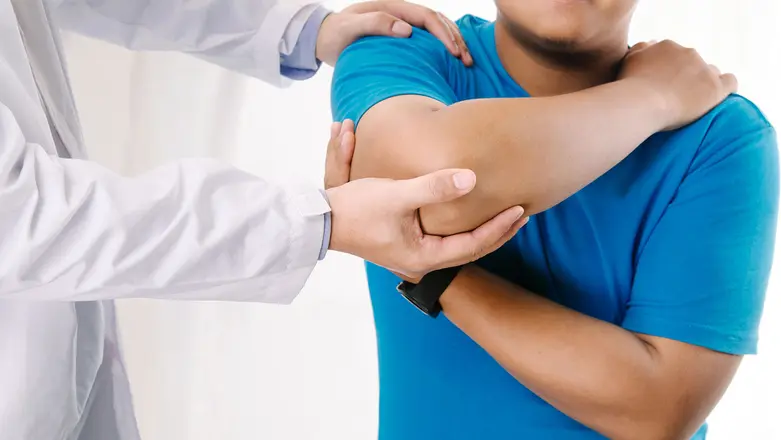Shoulder Dislocations & Instability
When the Shoulder Slips Out of Place
A shoulder dislocation happens when the upper arm bone pops out of its socket. Even after the first injury heals, the shoulder may remain unstable and prone to repeat dislocations.
Why the Shoulder Is Vulnerable to Instability
The shoulder is the most mobile joint in the body, which makes it less stable than other joints. Its wide range of motion depends on soft tissues like the labrum, ligaments, and rotator cuff for support. When these are stretched or torn during a dislocation, the shoulder may continue to feel loose or unstable.
Common Causes of Shoulder Dislocation or Instability
Shoulder instability can result from:
- Trauma: a fall, sports injury, or accident forcing the arm out of its socket
- Repetitive strain: overhead sports or jobs gradually loosening the joint
- Weak or torn stabilisers: labral tears or rotator cuff injuries
- Previous dislocations: once it happens, the risk of recurrence is higher
Symptoms That Point to Shoulder Instability
You may notice:
nar dapibus leo.
- A visibly displaced or “out of place” shoulder after trauma
- Sudden, severe pain with limited movement
- Recurrent slipping or “giving way” sensation, especially during overhead use
- Weakness, clicking, or catching in the joint
- Numbness or tingling if nerves are stretched
How Doctors Diagnose Shoulder Dislocation & Instability
Accurate diagnosis is key to preventing recurrence. Assessment may include:
- Physical examination: testing range of motion and stability
- X-rays: to check bone alignment and rule out fractures
- MRI scans: to look for labral or rotator cuff tears
- Special tests: reproducing instability under safe, controlled conditions
Treatment Options for Shoulder Instability
Treatment depends on the severity and frequency of dislocations:
- Immediate care for dislocation: gently repositioning the shoulder (closed reduction)
- Immobilisation: using a sling to rest the joint after dislocation
- Physiotherapy: strengthening muscles around the joint for stability
- Medications: for pain and inflammation
- Surgery: arthroscopic repair of the labrum or stabilisation procedures if dislocations are frequent or soft tissues are badly torn
Living with a “Loose” Shoulder
Even after the first dislocation heals, many patients feel ongoing instability. Avoiding risky movements, doing strengthening exercises, and getting timely medical advice help reduce the risk of repeated episodes.
Frequently Asked Questions (FAQ)
1. What’s the difference between shoulder dislocation and shoulder instability?
A dislocation is when the shoulder comes completely out of its socket. Instability means the shoulder feels loose and may slip out partially or repeatedly.
2. Can shoulder instability heal without surgery?
Yes, mild cases can often improve with physiotherapy and muscle strengthening. Surgery may be considered if the shoulder keeps dislocating despite non-surgical care.
3. How long does it take to recover from a dislocated shoulder?
Recovery may take several weeks for the initial injury, with rehabilitation lasting longer if soft tissues are torn. Returning to sports too quickly increases the risk of re-injury.
4. Why does my shoulder keep “popping out”?
This usually happens if stabilising tissues like the labrum or ligaments were damaged during the first dislocation. Each repeat episode may stretch tissues further, making recurrence more likely.
5. When should I see a doctor urgently?
If the shoulder looks deformed, if you cannot move the arm, or if there is numbness or weakness after a suspected dislocation, seek medical attention immediately.
Book a Consultation for Recurrent Shoulder Pain or Dislocations
If your shoulder keeps slipping or you’ve had a recent dislocation, schedule an appointment at Mash Spine & Orthopaedics to discuss diagnosis and treatment options.





